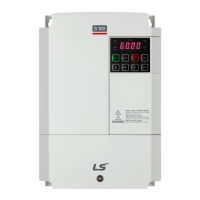• Ensure that no small metal debris, such as wire cut-offs, remain inside the inverter. Metal
debris in the inverter may cause inverter failure.
• Tighten terminal screws to their specified torque. Loose terminal block screws may allow
the cables to disconnect and cause short circuit or inverter failure. Refer to 11.6 Terminal
Screw Specification on page 422 for torque specifications.
• Do not place heavy objects on top of electric cables. Heavy objects may damage the cable
and result in electric shock.
• The power supply system for this equipment (inverter) is a grounded system. Only use a
grounded power supply system for this equipment (inverter). Do not use a TT, TN, IT, or
corner grounded system with the inverter.
• The equipment may generate direct current in the protective ground wire. When installing
the residual current device (RCD) or residual current monitoring (RCM), only Type B RCDs
and RCMs can be used.
• Use cables with the largest cross-sectional area, appropriate for power terminal wiring, to
ensure that voltage drop does not exceed 2%.
• Use copper cables rated at 600V, 75℃ for power terminal wiring.
• Use copper cables rated at 300V, 75℃ for control terminal wiring.
• Separate control circuit wires from the main sircuits and other high voltage circuits(200V
relay sequence circuit).
• Check for short circuits or wiring failure in the control circuit. They could cause system
failure or device malfunction.
• Use shielded cables when wiring the control circuit. Failure to do so may cause malfunction
due to interference. If a ground is needed, use STP (Shielded Twisted Pair) cables.
• If you need to re-wire the terminals due to wiring-related faults, ensure that the inverter
keypad display is turned off and the charge lamp under the front cover is off before working
on wiring connections. The inverter may hold a high voltage electric charge long after the
power supply has been turned off.

